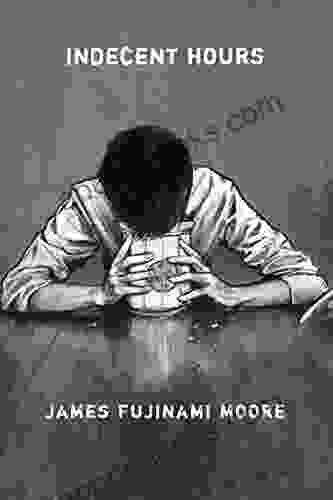California and the Struggle Over Unfree Labor: Emancipation and Reconstruction Reexamined

The history of California during the Civil War and Reconstruction eras is often overlooked in favor of more well-known events in the eastern United States. However, California's experience was unique and played a significant role in the larger national struggle over slavery and its aftermath.
4.5 out of 5
| Language | : | English |
| File size | : | 4511 KB |
| Text-to-Speech | : | Enabled |
| Enhanced typesetting | : | Enabled |
| Word Wise | : | Enabled |
| Print length | : | 332 pages |
| Screen Reader | : | Supported |
In this article, we will explore the complex and often contradictory story of California's struggle over unfree labor. We will examine the origins of slavery in California, the debates over emancipation, and the challenges of integrating freed slaves into postwar society.
The Origins of Slavery in California
Slavery was introduced to California by Spanish colonists in the late 18th century. The Spanish used enslaved Native Americans and Africans to labor on their missions and ranches. When Mexico gained independence from Spain in 1821, slavery was abolished in California. However, the Mexican government continued to allow peonage, a form of debt bondage that was often used to exploit Native Americans and poor Mexicans.
When the United States annexed California in 1848, the issue of slavery became a major source of conflict. Southern slaveholders wanted to expand slavery into California, while Northerners opposed it. The Compromise of 1850, which admitted California to the Union as a free state, temporarily resolved the issue.
The Debates Over Emancipation
Despite the Compromise of 1850, slavery continued to exist in California in the form of peonage and forced labor. In 1862, President Abraham Lincoln issued the Emancipation Proclamation, which freed all slaves in Confederate-held territory. However, the Emancipation Proclamation did not apply to California, which was a Union state.
In 1863, California voters rejected a proposal to abolish slavery in the state. However, the state legislature passed a law in 1864 that prohibited the importation of slaves and freed any slaves who had been brought into the state illegally.
The end of the Civil War in 1865 finally brought about the abolition of slavery in California. The Thirteenth Amendment to the United States Constitution, which abolished slavery throughout the country, was ratified in 1865.
The Challenges of Reconstruction
The end of slavery did not end the struggle over unfree labor in California. Freed slaves faced discrimination and violence, and many were forced to work in low-paying jobs. The state government did little to help freed slaves, and many were left to fend for themselves.
Reconstruction in California was a time of great turmoil and change. The state was struggling to rebuild its economy and integrate freed slaves into society. The challenges of Reconstruction were compounded by the fact that California was a bFree Download state, and it was often difficult to enforce federal laws that were designed to protect freed slaves.
Despite the challenges, Reconstruction did bring about some positive changes in California. The state legislature passed a number of laws that protected the rights of freed slaves, and the federal government established a Freedmen's Bureau in California to help freed slaves find jobs and housing.
However, Reconstruction was ultimately a failure in California. The state legislature passed a number of laws that restricted the rights of freed slaves, and the federal government withdrew its support for Reconstruction in 1877. As a result, freed slaves in California continued to face discrimination and violence for decades to come.
The struggle over unfree labor in California was a complex and often contradictory story. Slavery was introduced to California by Spanish colonists in the late 18th century, and it continued to exist in the form of peonage and forced labor after California became a state. The end of the Civil War brought about the abolition of slavery in California, but freed slaves continued to face discrimination and violence. Reconstruction was a time of great turmoil and change, but it ultimately failed to bring about lasting equality for freed slaves.
The legacy of the struggle over unfree labor in California is still felt today. The state's history of slavery and discrimination continues to shape race relations in California, and the challenges of integrating freed slaves into postwar society are still relevant today.
Image Credits
[Image of a group of enslaved Native Americans and Africans working on a mission in California]
[Image of a group of freed slaves in California after the Civil War]
Bibliography
* California and the Struggle Over Unfree Labor: Emancipation and Reconstruction by James M. McPherson * The Struggle for Equality: Emancipation and Black Reconstruction in California, 1850-1870 by W. Marvin Dulaney
4.5 out of 5
| Language | : | English |
| File size | : | 4511 KB |
| Text-to-Speech | : | Enabled |
| Enhanced typesetting | : | Enabled |
| Word Wise | : | Enabled |
| Print length | : | 332 pages |
| Screen Reader | : | Supported |
Do you want to contribute by writing guest posts on this blog?
Please contact us and send us a resume of previous articles that you have written.
 Book
Book Novel
Novel Page
Page Chapter
Chapter Text
Text Story
Story Genre
Genre Reader
Reader Library
Library Paperback
Paperback E-book
E-book Magazine
Magazine Newspaper
Newspaper Paragraph
Paragraph Sentence
Sentence Bookmark
Bookmark Shelf
Shelf Glossary
Glossary Bibliography
Bibliography Foreword
Foreword Preface
Preface Synopsis
Synopsis Annotation
Annotation Footnote
Footnote Manuscript
Manuscript Scroll
Scroll Codex
Codex Tome
Tome Bestseller
Bestseller Classics
Classics Library card
Library card Narrative
Narrative Biography
Biography Autobiography
Autobiography Memoir
Memoir Reference
Reference Encyclopedia
Encyclopedia Philip Larkin
Philip Larkin Reprint Edition Kindle Edition
Reprint Edition Kindle Edition Lucia Jordan
Lucia Jordan Kristan Higgins
Kristan Higgins Robert Kumpf
Robert Kumpf Stuart W Bunting
Stuart W Bunting Katie Wismer
Katie Wismer Travis Yates
Travis Yates Heather Mackey
Heather Mackey Virginia Ironside
Virginia Ironside Megan Derr
Megan Derr Jerica Macmillan
Jerica Macmillan Travel On The Dollar
Travel On The Dollar Sara Marcus
Sara Marcus J R Ward
J R Ward Tamie Dearen
Tamie Dearen William G Roy
William G Roy Marty Hogan
Marty Hogan Salvatore Schiavo Campo
Salvatore Schiavo Campo Will Stockton
Will Stockton
Light bulbAdvertise smarter! Our strategic ad space ensures maximum exposure. Reserve your spot today!

 Corbin PowellUnveiling the Secrets of Ancient Rome: Immerse Yourself in the Captivating...
Corbin PowellUnveiling the Secrets of Ancient Rome: Immerse Yourself in the Captivating...
 Eddie BellSlip into Comfort and Style: The Thigh High Chunky Sock Knitting Pattern You...
Eddie BellSlip into Comfort and Style: The Thigh High Chunky Sock Knitting Pattern You...
 Allan JamesAn Action Plan for Solving Our Climate Crisis Now: A Comprehensive Guide to...
Allan JamesAn Action Plan for Solving Our Climate Crisis Now: A Comprehensive Guide to... Jay SimmonsFollow ·12.3k
Jay SimmonsFollow ·12.3k Allen ParkerFollow ·8k
Allen ParkerFollow ·8k Alec HayesFollow ·14.1k
Alec HayesFollow ·14.1k Casey BellFollow ·11.2k
Casey BellFollow ·11.2k Emanuel BellFollow ·12.9k
Emanuel BellFollow ·12.9k Everett BellFollow ·9.4k
Everett BellFollow ·9.4k Branson CarterFollow ·6.5k
Branson CarterFollow ·6.5k Martin CoxFollow ·17.5k
Martin CoxFollow ·17.5k

 Harry Cook
Harry CookRape Blossoms and White Sky: A Floral Symphony of...
A Kaleidoscope of Colors...

 Vic Parker
Vic ParkerThe Passion of Jovita Fuentes: Unveiling the...
Immerse yourself in the...

 Cormac McCarthy
Cormac McCarthySinners and Saints: A Dark New Adult High School Bully...
Sinners and Saints is...
4.5 out of 5
| Language | : | English |
| File size | : | 4511 KB |
| Text-to-Speech | : | Enabled |
| Enhanced typesetting | : | Enabled |
| Word Wise | : | Enabled |
| Print length | : | 332 pages |
| Screen Reader | : | Supported |












